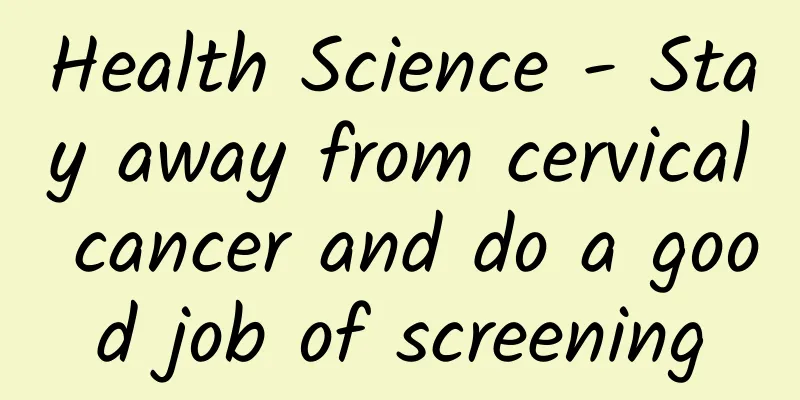Red tube, white swatch, open mouth, nucleic acid test

|
Red tube, white swabbed, open your mouth wide, and test for nucleic acid. This is a scene that can be seen frequently. Due to the spread of COVID-19 in recent years, nucleic acid testing has become a "daily routine". If you don't take a nucleic acid test one day, you will feel embarrassed to say hello to people when you go out. Whether it is testing nucleic acid or eating daily, opening your mouth wide is a necessary step. Opening your mouth wide is risky, it would be troublesome if your jaw falls off! "Open your mouth wide and drop your jaw", it sounds so fresh, but it is by no means accidental. Today, let’s talk about the biomechanics of “opening your mouth wide and dropping your jaw.” 1. Justified - What is "open mouth and drop jaw"? The phenomenon of "opening your mouth wide and dropping your jaw" is medically called Temporomandibular Disorder (TMD). The temporomandibular joint is also called the temporomandibular joint or mandibular joint. It is located in front of the tragus. When you open and close your mouth, if you touch the active area in front of your ear, you will find that there is a bony nodule under the skin that moves back and forth. This part is the temporomandibular joint (Figure 1). Figure 1 Temporomandibular joint The temporomandibular joint is one of the most complex joints in the human body and the only joint that can move on both sides of the human body at the same time. From an anatomical point of view, the temporomandibular joint is the only movable joint in the head and face. It is composed of the articular fossa of the temporal bone and the condyle of the mandible. In addition to the articular process and the articular fossa, there is also a gasket in the middle called the articular disc. When we chew and open and close our mouths, there will be a certain mutual movement relationship between the three (Figure 2). Figure 2 Temporomandibular joint movement The functions of the temporomandibular joint are very complex, including opening and closing, left and right lateral movements, and rotational movements. The temporomandibular joint is used very frequently, and it moves when chewing and speaking. If some people have the habit of grinding their teeth at night, the temporomandibular joint cannot get a rest even at night, so it is easy for the temporomandibular joint to have some problems, which is called temporomandibular joint disorder, TMD! TMD is the most common disease in the oral and maxillofacial region. TMD does not refer to a single disease, but a general term for a series of diseases. Its pathogenesis is not yet fully understood. The main clinical manifestations of TMD are pain in the joint area, joint clicking during movement, and mandibular movement disorders. There are quite a few TMD patients, and the prevalence rate abroad is 28% to 88%. Besides the annoying sound, the most annoying thing is that it hurts! Because the tissue behind the disc is full of nerve endings and blood vessels, you will feel like torture every time you open your mouth... Another thing is that you can't open your mouth, and the food in front of you can't be eaten; or your mouth opens too wide and your jaw falls off, which is one of the more extreme situations. Damn, it's so annoying! 2. Get to the bottom of the matter – Why do we “open our mouth wide and our jaw drops”? Opening and closing your mouth are inseparable from biomechanics. Whether we open or close our mouth, we cannot do without a small structure in the temporomandibular joint - the articular disc (Figure 3). The articular disc is a piece of elastic cartilage tissue. Its structural function is to separate the joint cavity into two parts and make the articular surface and the articular fossa more adaptable (high degree of conformation). Its functional role is to connect the temporal bone and the mandible, and connect the movement between them; it allows the joint movement to be carried out in the upper and lower joint cavities respectively, thereby increasing the flexibility and diversity of the movement; in addition, it also has the function of buffering and shock absorption. Figure 3 Articular disc When you open your mouth, the muscles exert force and contract, and the articular disc and mandible are pulled forward together, allowing the mouth to open wider. When you close your mouth, the articular disc returns to its original position, connecting the protrusion of the mandible and the groove of the temporal bone, fitting perfectly and returning to normal position (Figure 4). Figure 4 The articular disc returns to its normal position When the articular disc is misaligned, every movement of the mandible has to pass through the small protrusion at the end of the articular disc. This causes the joint to click as the mouth opens and closes and the mandible moves back and forth (Figure 5). Figure 5 The reciprocating motion of the articular disc Such a small joint disc has to bear countless opening and closing movements of our mouths every day, such as when we talk, yawn, eat, etc. Therefore, it may be tired and make some small mistakes occasionally - for example, the mandible returns but the joint disc does not; Damn, the jaw falls off (Figure 6)! The scientific term is "joint dislocation". Figure 6: Opening the mouth too wide, the jaw falls off There are many causes of TMD. 1) Psychological factors. Psychological factors play a very important role in the occurrence and aggravation of TMD. 2) Traumatic factors. Many patients have a history of local trauma, such as acute trauma such as external impact, sudden biting of hard objects, excessive mouth opening (such as yawning); and frequent chewing of hard food, nighttime grinding of teeth, and unilateral chewing habits. These factors may cause joint contusion or strain and dysfunction of the masticatory muscles. 3) Occlusal factors. Occlusal disorders can also cause the occurrence or aggravation of TMD, such as occlusal interference, excessive wear of teeth, excessive loss of molars, poor restorations, and too low inter-jaw distance, which can destroy the functional balance between the internal structures of the joints and promote the occurrence of this disease. 4) Systemic and other factors. Systemic diseases, such as rheumatoid arthritis, can also cause TMD. In addition, some iatrogenic factors, such as radiotherapy for nasopharyngeal carcinoma, can lead to changes in the structure and function of the masticatory muscles, which can also cause TMD. 3. Treat the symptoms with the right medicine - How to treat "open mouth wide and jaw dropping"? TMD, if your chin falls off, it is generally not a big deal. You can go to the hospital and put it back without any effort. Remember, before going to the hospital, it is more convenient to get a "poked" and tested for nucleic acid if your chin falls off. Drug treatment mainly eliminates inflammation and relieves pain. Non-drug treatment includes psychological-behavioral therapy, orthodontic therapy to correct occlusal relationship and bad habits such as excessive mouth opening and unilateral chewing, etc., or other non-drug treatments such as nerve stimulation therapy, nerve block therapy, surgical treatment, physical therapy, traditional Chinese medicine acupuncture therapy, etc. Of course, there are some ways to prevent it in daily life. Avoid opening your mouth too wide and hold your chin up when you yawn; to a large extent, you can avoid the serious consequences of TMD. Rumors: (1) A passenger in Shandong was playing cards on a train. He got a good hand and laughed so hard that his jaw fell off. (2) An old lady's jaw fell off and she went to the hospital for treatment. After the doctor put her jaw back in, the old lady felt good and blurted out "Thank you, doctor!" Her jaw fell off again and the doctor had to put it back in again. (3) A woman liked to eat pig's trotters, so she ate pig's trotter soup for three consecutive days. On the last day, the woman opened her mouth wide to put the pig's trotter in her mouth and heard a "crack" and her jaw fell off (Figure 7). Don't laugh, these are all true stories. Figure 7 What if you eat in an ugly way? For more popular science articles about biomechanics around us, please follow my WeChat public account “Medical Biomechanics” (Medical_biomechanics). Red tube, white swatch, open mouth, nucleic acid test |
>>: Practical! A complete guide to the medical treatment process for elderly infected people
Recommend
Small blisters in private parts
Generally speaking, the female private parts are ...
Where to apply Sanfutie for uterine cold
Key reminder: Is the Sanfu plaster treatment for ...
How often should you have sex during pregnancy preparation?
In order to ensure that their babies are healthy,...
What to do if the underwear is too small?
Underwear is a special piece of clothing for wome...
Is it useful to take Wuji Baifeng Pills for irregular menstruation?
When a girl has her first menstruation, she has g...
Why does yellow water flow after abortion?
As the economy develops, society becomes more ope...
The performance of completely clean medical abortion
Medical abortion is also a relatively common meth...
How to eat fresh lotus? How to eat lotus seeds?
Lotus flower: Belongs to the Nymphaeaceae family ...
What to do if your blood lipids are high? Experts teach you how to lower blood lipids scientifically and protect cardiovascular health!
Mr. Wang, who lives in Changsha, is a meat lover ...
How long does it take to recover from dryness after childbirth?
Although you can have sex during pregnancy, it is...
Menstrual period is a little brown and pregnant
The amount of a woman's menstrual period is c...
What causes flat warts on the chest?
In our daily life, we often see patients with fla...
A fetus found to have "super male syndrome" needs to be aborted, otherwise it will become a criminal when it grows up?
“Are children with super male syndrome potential ...
What are some tips for postpartum scar hyperplasia?
Many women will have scars after giving birth, wh...









